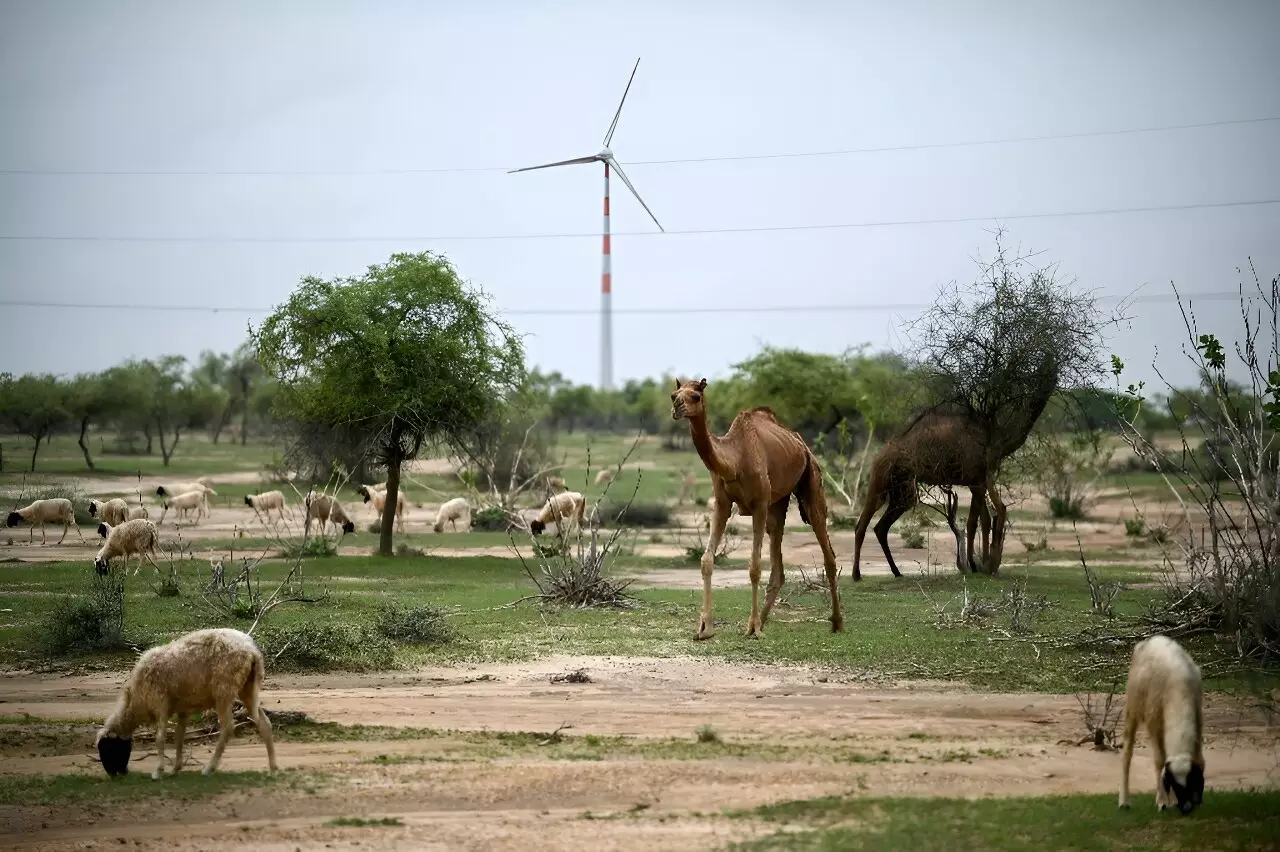The relentless advance of wind energy infrastructure across India’s Thar Desert brings both promise and peril. As the country rushes to reconfigure its energy landscape, positioning itself as a leader in renewable resources, the realities on the ground reveal significant discord. Like many developing nations, India grapples with the pressing need to reduce greenhouse gas emissions while simultaneously accommodating the needs and rights of local communities. Here, in the arid expanses of Rajasthan, farmers and herders express deep frustration that the creation of wind power has become an incursion into their traditional way of life, leaving them to bear the brunt of a dual crisis driven by climate change and the nation’s pursuit of a greener economy.
At the heart of this tension lies a fundamental imbalance. As external investors, predominantly large conglomerates, erect towering wind turbines, the local populations, whose livelihoods depend on the land, are paying the price. The voices of those like Nena Ram—a venerable livestock herder—illustrate the broader narrative: “The big companies have come here and built the windmills, but they’re useless to us.” Such sentiments reflect the growing discontent among communities that feel marginalized in the rush for renewable energy.
The Thar Desert is no desolate wasteland; instead, it has a complex ecological system that supports a diverse range of flora and fauna, vital for the local agrarian economy. The sacred groves known as “orans” serve not only as biodiversity hotspots but also as essential water reserves for livestock—a lifeblood that has sustained these communities for generations. As these ancient oases face degradation from industrial projects, herders report diminishing grasslands and eventual desertification. The aurora of hope associated with renewable energy fades as the realities of construction impose barriers to survival, threatening a way of life that has endured for centuries.
Moreover, the environmental implications of such large-scale wind farms extend beyond local farming issues. Endangered species such as the Great Indian Bustard, once prevalent in these regions, find their habitats disrupted by the construction of wind turbines and high-tension power lines. Local wildlife management, combined with habitat degradation caused by industrial activities, presents challenges that cannot be overlooked. Communities, while welcoming the idea of clean energy, find themselves at odds with the harsh realities that such developments typically entail.
Community Needs vs. Corporate Promises
Corporations like the Adani Group and Suzlon tout their roles as benefactors, advocating for “sustainable development” through initiatives aimed at bolstering health, education, and local economies. However, the perceptions held by community members suggest a glaring disconnect. The lack of tangible benefits is palpable, with local farmers reporting a decline in livestock yield and an encroachment upon grazing lands crucial for their livelihoods. “The farmers are paying the price,” laments Jitendra Kumar, a local health worker. His observation captures a critical dimension of the green energy debate, highlighting the need for corporate accountability in their promises of enhancement.
While the construction of wind farms may contribute to India’s overall goals for renewable energy output, the sustenance of local communities is just as critical. Yet power lines and the significant energy produced do not always serve the neediest regions. Residents in Jaisalmer often experience extended power cuts, limiting their access to electricity despite living in proximity to these energy-generating giants. As local environmental activist Sumer Singh Bhati puts it, “We are leading our lives in darkness,” suggesting a glaring incongruity between energy production and energy accessibility in the region.
India’s ambitious objectives—to achieve a non-fossil fuel power generation capacity of 500 GW by 2030 and net-zero emissions by 2070—are essential steps in combating climate change. Nonetheless, the implementation of these goals necessitates fostering inclusive frameworks that prioritize community engagement and respect for local environments. As wind energy further establishes itself as a critical component of India’s energy strategy, the lessons learned from the conflicts in the Thar Desert can offer valuable guidance.
Going forward, responsibility must extend beyond merely developing energy solutions; there is a pressing need for ethical stewardship of both the land and the lives that depend on it. Striking a balance between advancing renewable energy initiatives and preserving the cultural and environmental wealth of local communities will not only yield sustainable outcomes but also create a more equitable distribution of benefits. India’s renewable energy march may be a significant stride towards global sustainability, but it cannot afford to do so at the expense of its own people. Only then can the promise of a greener future genuinely resonate throughout the nation.


Leave a Reply